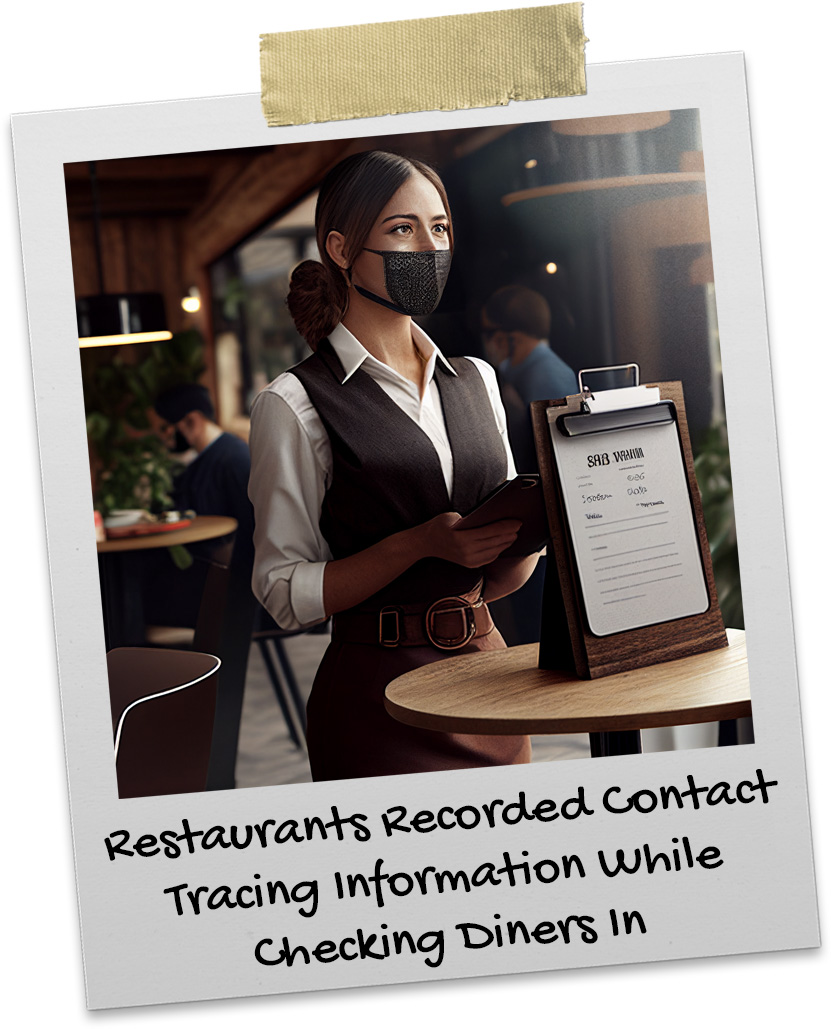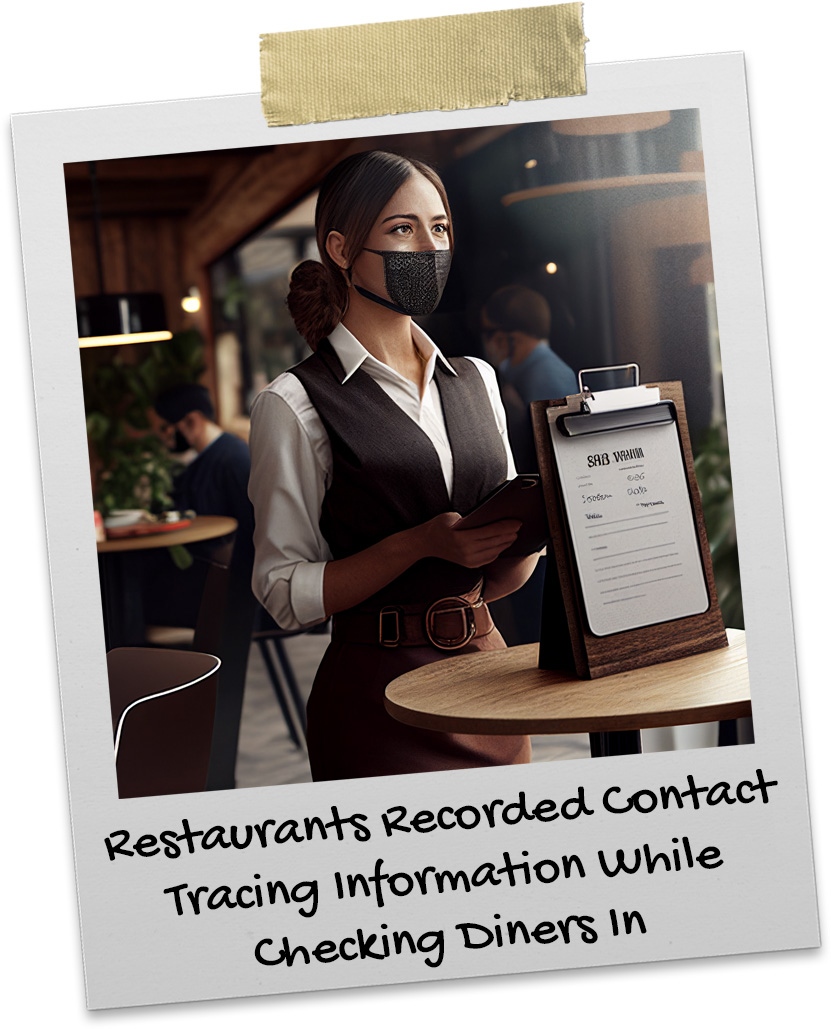Restaurants Recorded Contact Tracing Information at Check-in


As restaurants started opening and people were allowed to dine indoors, one of the stipulations in some areas was that the restaurant was required to log their patron’s information prior to seating them.
If it was reported that somebody who was dining at the restaurant had a case of COVID-19, the health department could trace the customer back to the restaurant and then could request the whole list of people that were dining in the restaurant the same day to alert them that they were in close contact.
In theory, that network was supposed to exist and be used in certain cases to prevent massive transmissions of the disease. In reality, the practice never really delivered on its promise to slow the spread of the disease.
Some restaurants found that people weren’t happy giving up their information so freely. Many people looked at it as an invasion of privacy. People would offer obviously fake names and phone numbers, just to move past the hurdle and be seated.
Mostly, health departments didn’t have the infrastructure in place to follow-up on every new case with an investigation and the proper connections they would have to make with the people who perhaps encountered the person who was infected.
While public health researchers were convinced indoor dining was a risky activity in areas where COVID-19 was spreading, getting solid data to justify restaurant restrictions was difficult. It takes in-depth, resource-heavy disease investigations to determine where people were exposed to the coronavirus, and those contact-tracing efforts never got off the ground in most of the country.
While restaurants appeared to be among the most common places to get infected with COVID-19, contact tracing in most areas had been so lackluster that few health departments have been able to link disease clusters to in-person dining.



